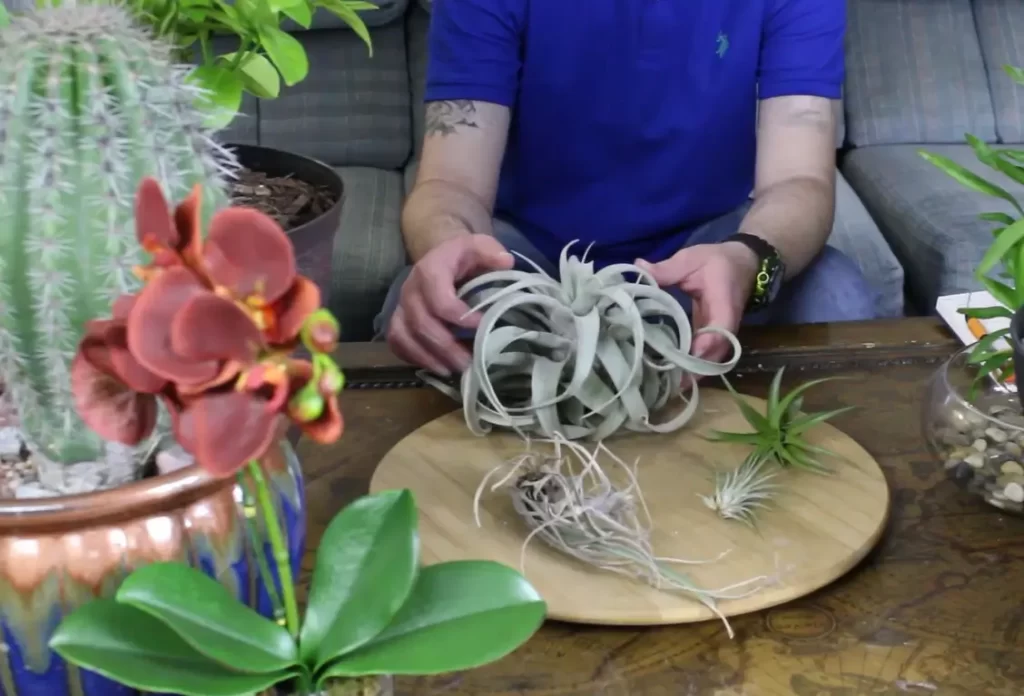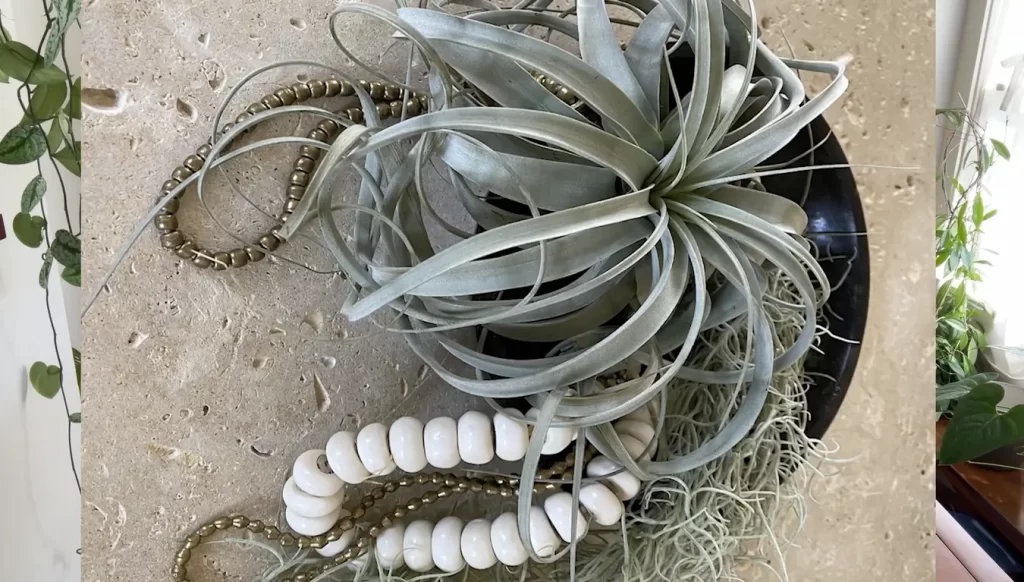Do Air Plants Like Humidity? Everything You Need To Know
Air plants have become popular among enthusiasts as they are a unique and fascinating addition to any indoor garden. However, it’s important to understand their specific care requirements to keep air plants thriving. One key aspect of air plant care is humidity.
Air plants like humidity. They require high levels of humidity to thrive and grow. Maintaining an appropriate humidity level is important, as high and low humidity levels negatively affect air plants.
This article will delve into the relationship between air plants and humidity to answer the question, “do air plants like humidity?” We will explore the ideal humidity levels for air plants, how high or low humidity affect their growth, and tips for maintaining the right humidity levels for healthy air plants.
What Are Air Plants And Types Of Air Plants
Air plants are a type of plant that grows without soil and absorb nutrients and moisture from the air through their leaves. There are over 650 species of air plants, and they belong to the family Tillandsia. Air plants are native to Central and South America, Mexico, and the southern United States.

There are several air plants, each with unique characteristics and growth habits. Some of the most common types of air plants include:
- Tillandsia Ionantha: This is a small air plant that can fit in the palm of your hand. It has thin leaves that turn bright red when in bloom.
- Tillandsia Xerographica: This air plant is larger and has thick, gray leaves that form a rosette shape.
- Tillandsia Stricta: This is a tall air plant with thin, spiky leaves that can grow up to 20 inches tall.
- Tillandsia Capitata: This air plant has a bulbous base with thin, green leaves that can grow up to 12 inches in height.
- Tillandsia Brachycaulos: This air plant has soft, velvety leaves that turn red when in bloom.
How Air Plants Adapt To Their Environments
Air plants have several unique adaptations that allow them to thrive without soil. Some of these adaptations include:
Absorption Through Leaves
Air plants absorb moisture and nutrients through their leaves. These trichomes capture water and air nutrients and protect the plant from direct sunlight.
Reduced Root System
These plants have a minimal root system, allowing them to grow in various locations, including trees, rocks, and artificial surfaces. This adaptation also allows air plants to be more mobile and adaptable to changing environments.
Drought Tolerance
Air plants have adapted to survive in environments with limited water availability by developing a mechanism to conserve water. They also enter a state of dormancy when water is scarce to conserve energy until conditions improve.
Epiphytic Growth
As epiphytes, air plants grow on other plants and surfaces, allowing them to access sunlight and otherwise unavailable nutrients. This adaptation also helps to protect air plants from predators on the ground.
How Air Plants Use Humidity For Photosynthesis And Growth
Humidity plays a significant role in the growth of air plants. As epiphytes, air plants absorb moisture and nutrients from the surrounding air through their leaves. The amount of moisture and nutrients available in the air is directly impacted by humidity levels, affecting air plant growth. Here are some ways in which humidity impacts air plant growth:
- Water Absorption: Air plants absorb moisture from the surrounding air. When humidity is high, air plants can take in more water, help to keep them hydrated, and promote growth.
- Nutrient Absorption: In addition to water, air plants also absorb nutrients from the surrounding air. When humidity is high, the number of nutrients available in the air also increases, promoting healthy growth and development.
- Photosynthesis: Air plants use photosynthesis to create energy, which relies on carbon dioxide absorption. When humidity is high, air plants can absorb more carbon dioxide, which helps fuel their growth and photosynthesis.
- Preventing Dehydration: These plants are vulnerable to dehydration, which low humidity levels cause. When humidity is low, air plants lose moisture more quickly, which causes them to wilt and ultimately harm their growth and development.
The Ideal Humidity Level For Air Plants
The ideal humidity level for air plants depends on the species and the environment in which they are growing. Most air plants generally thrive in humidity levels between 50-70%. However, some species require higher or lower humidity levels to grow and thrive.
Air plants tolerate short periods of low humidity, but prolonged exposure to dry air leads to dehydration and harms their growth and development. Similarly, excessively high humidity levels increase the risk of fungal and bacterial infections, which harm the plant.
You can use several methods to maintain the ideal humidity level for your air plant. One option is to mist the plant regularly with water to increase the moisture in the air. Another option is to place the air plant near a source of humidity, such as a humidifier or a tray of water.
If you live in a dry environment, you must take extra steps to maintain the proper humidity level for your air plant, such as covering it with a clear plastic bag or placing it in a terrarium. Monitoring the humidity levels and adjusting your care help air plants thrive and grow to their full potential.
How High Humidity Affect Air Plants
While humidity is essential for the growth and survival of air plants, excessively high humidity levels also negatively affect their health. Below are some potential effects of high humidity on air plants:
- Fungal And Bacterial Infections: High humidity levels create a breeding ground for fungal and bacterial infections. These infections harm the plant and even lead to its death.
- Root Rot: Excessive moisture makes air plants’ roots rot, harming the plant’s growth and survival.
- Mold Growth: High humidity levels also promote mold growth, harming plants and humans.
- Slow Growth: In some cases, excessively high humidity levels slow air plants’ growth. The plant becomes too saturated with moisture, hindering nutrient absorption and ultimately harming its growth.
- Pest Infestations: Certain pests like dust mites and cockroaches thrive in high-humidity environments. If humidity levels are not controlled, these pests can become a problem.
- Structural Damage: High humidity levels cause structural damage to buildings over time. This is because excess moisture makes the wood rot and metal rust, which can weaken the structural integrity of the building.
- Health Issues: High humidity levels contribute to a range of health problems, including respiratory issues, allergies, and asthma. This is because high humidity can promote mold growth and other harmful substances.
How Low Humidity Affect Air Plants
Low humidity levels also negatively affect the health and growth of air plants. The Following are some potential effects of low humidity on air plants:
- Dehydration: Air plants rely on moisture in the air to absorb nutrients and water. The plant becomes dehydrated with low humidity levels and wilts or dries out.
- Stunted Growth: Low humidity levels also slow down the growth of air plants. The plant cannot absorb enough moisture and nutrients to support healthy growth.
- Brown Leaf Tips: When air plants are exposed to low humidity for extended periods, the tips of their leaves turn brown and dry out.
- Susceptibility To Pests And Disease: When air plants are stressed by low humidity, they become more susceptible to pests and disease.
- Dry Skin And Respiratory Issues: Low humidity causes dry skin, nosebleeds, and other respiratory issues. This is because dry air irritates the mucous membranes in the nose and throat.
- Static Electricity: This type of humidity cause static electricity, which is a nuisance and damage electronics.
- Wood Damage: Low humidity causes wood to dry out and shrink, leading to structural damage over time.
- Increased Risk Of Infections: Low humidity can increase the risk of respiratory infections, as dry air makes it easier for viruses and bacteria to spread.
How To Maintain The Ideal Humidity For Air Plants
Maintaining the ideal humidity level is essential for the health and growth of air plants. Here are some tips for maintaining the ideal humidity level for your air plants:

- Monitor Humidity Levels: Use a hygrometer to monitor the humidity levels around your air plants. Aim for a range between 50-70%, but be sure to adjust based on the specific needs of your plant species.
- Misting: Misting your air plants with water increase humidity levels around the plant. However, be careful not to mist too much, as excess moisture cause issues like root rot.
- Soaking: Soaking your air plants in water once a week also helps to increase humidity levels. Be sure to dry the plant completely after soaking to avoid excess moisture.
- Grouping: Grouping air plants together create a microclimate that helps to increase humidity levels around the plants.
- Humidifiers: Using a humidifier is an effective way to increase humidity levels in your home. Just be sure to clean the humidifier regularly to avoid the growth of mold or bacteria.
- Avoid Drafts: Drafts dry out the air and lower humidity levels. Be sure to place your air plants away from drafty windows or doors.
Final Words
Air plants are fascinating and adapted to thrive in a unique environment. They require high levels of humidity to grow and remain healthy. While high humidity promotes growth, low humidity leads to dehydration, stunted growth, and other issues.
We hope this guide provided useful information on do air plants like humidity. By maintaining an appropriate level of humidity, misting regularly, and using a humidifier if necessary, you can help your air plants thrive. With proper care and attention, these unique and beautiful plants can be a wonderful addition to any home or office.
